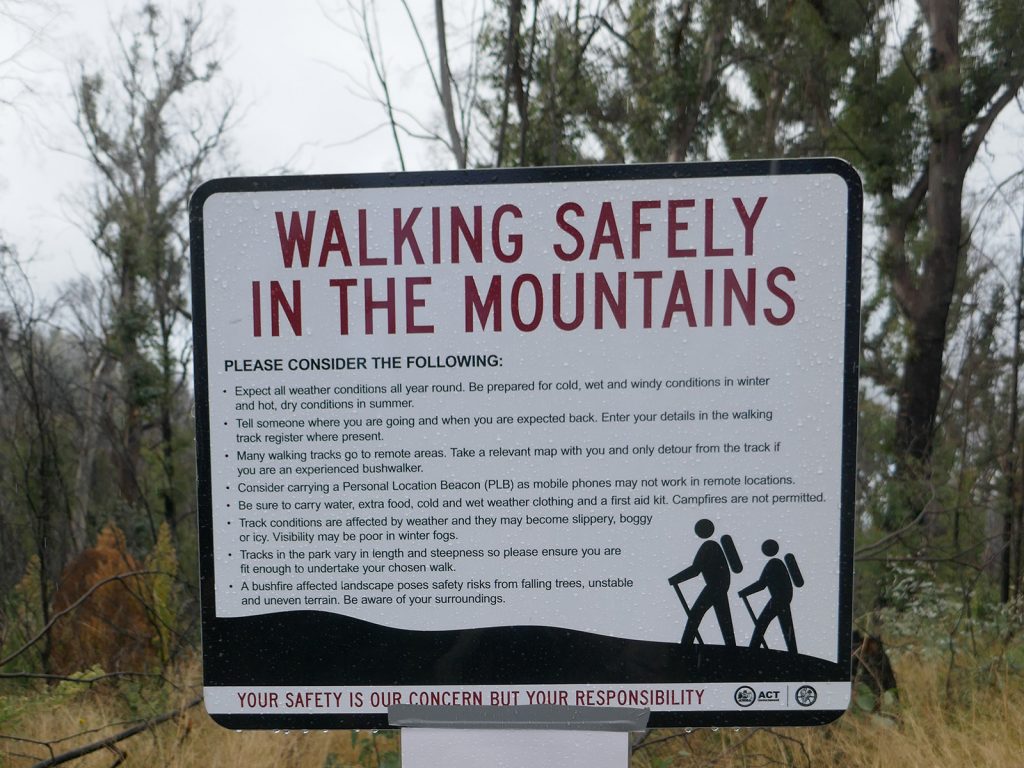 There are better options for emergency communications than this!
There are better options for emergency communications than this!
Communications technology has improved considerably over the last couple of decades. There are now several types of emergency communication devices suitable for bushwalking: mobile phone; satellite phone, tracking device or personal locator beacon (PLB).
At least one emergency communication device should be carried on a bushwalking or ski touring trip.

For the bushwalker and ski tourer deciding on the purchase of an emergency communication device, what are the options? Which type is most suitable for the trips likely to be undertaken?
When planning a particular trip choose the most appropriate communications device. It may be a device owned by a group member or it may be necessary to borrow or hire the device.
Two-way communications via a mobile or satellite phone is the ideal and the most effective means of communication in a distress situation, for these reasons:
- Instant confirmation that the call has been received by emergency services.
- Ability to communicate position, nature of distress, assistance required.
- Emergency services can adequately scale the response according to the required assistance.
- Ability to provide updates and also receive advice until emergency services arrive.
A mobile phone may be sufficient on some trips. Nearly everyone owns one and most people know how to use one. It provides cheap and effective two way communication that can arrange a tow for a bogged vehicle or get the latest weather forecast, as well as obtain assistance in an emergency.
However, many bushwalking areas have no mobile phone coverage and satellite phones are costly and heavy. Although the ideal, two-way communication may not always be practical or achievable.
The following sections review the types of emergency communications devices available and the advantages and limitations of each.
Factors to consider are:
- One-way or two-way communication
- Cost to purchase, cost to use and cost to maintain
- Battery type and life
- Weight and bulk
- Ease of use in difficult circumstances
- Single purpose or multipurpose device
Determining location in an emergency
Emergency services need a location in order to provide assistance to avoid a time consuming and costly search. Each type of emergency device discussed has a built in GPS, so an accurate location is available. Location is sent automatically when a PLB or tracker SOS is activated.
In the case of a mobile phone or sat phone, the user should know how read the location from the device so that information can be included in a voice call or text message, where the device lacks the capability to do that automatically.
Note: The following sections avoid excessive technical detail.
Read the instructions and practice
It is crucial that at least two group members are thoroughly familiar with the device carried to ensure that it can be used effectively in difficult circumstances. This includes knowing who has the device, where it is stowed, and any PINs or passwords.
A PLB has only 1 button and requires no practice, and everyone is familiar with a mobile phone. However, satellite phones and some trackers are not intuitive to use and require regular practice.
Caution
Carrying an emergency communication device is no substitute for careful planning, good bush and navigation skills, appropriate fitness and equipment and sound leadership.
Bushwalking and ski trips should take into account all participants’ skills and experience, and the group should be of sufficient size and ability. Meeting these basic requirements for safety should ensure the planned activity is safe and enjoyable. External assistance should not be required except for unusual or unexpected circumstances.
Other considerations
- Some Clubs own a device for use on club trips; a very cost effective option.
- Solo walkers should consider a tracker, as the passive tracking function is a useful safety backup.
- PLBs and satellite phones can often be hired.
- The device should be in a protective and waterproof pouch in a secure and accessible location.
- Keep emergency communication devices away from curious young children.
- If there is a possibility that a group may split during the trip, then two devices should be carried.
- On trips for beginners or children, for example a ski touring trip for novices, good mobile phone coverage should be a consideration when planning.
